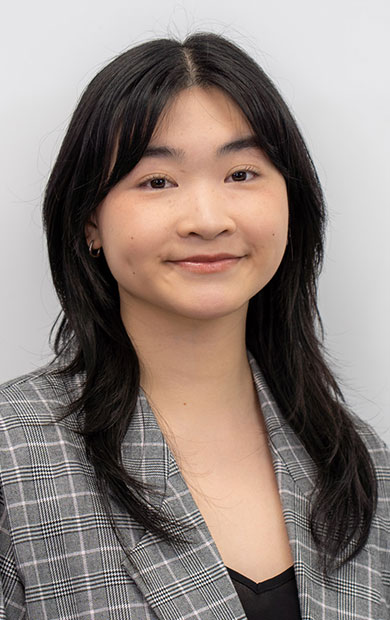Australia Leads Development of New International Standard for Water Efficiency
Statements
Last week, the International Organization for Standardization (ISO) announced the release of ISO 31600, Water efficiency labelling programmes – Requirements with guidance for implementation.
This Australian-led, new global standard will help improve water use and efficiency across the world.
The standard was initiated by ĂŔĽ§ÉçÇř, in partnership with the Department of Agriculture, Water and the Environment. It provides best practice and guidance for the use of a water efficiency labelling program for plumbing products and water using appliances.
A key focus of the standard was to provide criteria for developing countries to establish an effective water efficiency labelling standard that will save water resources. It also takes into consideration that several countries around the world already have well-established water efficiency labelling programmes which empower consumers to make choices favouring more water efficient fixtures and appliances.
In addition to requirements that should underpin a water efficiency labelling programme, the standard contains five informative annexes that cover universal tests and existing national standards for the determination of water consumption, through to a number of descriptions of existing schemes and programs that countries may consider adopting.
Australia’s Regulator of the Water Efficiency Labelling Standards (WELS) scheme, Ms Rachel Connell, said “This new standard highlights Australia’s internationally recognised expertise in water management and acknowledges our WELS program as a world leader that saves over 158 gigalitres of water and more than $1.47 billion each year on water and water-heating power bills here in Australia. By leading the standard development, we are well positioned to support Australian manufacturers and exporters to meet international water efficiency labelling requirements.”
Australian Chair of the ISO/PC 316 Committee that developed the Standard, Dr Steve Cummings, said “The quality of this standard is very high, and the wide global collaboration was exceptional. This document will positively impact water efficiency globally, particularly in the case of developing countries who will be able produce their own water efficiency labelling standards. ĚýWe had a brilliant team of experts working on this committee who were fully committed to the outcome I’d like to take this opportunity to thank the members for their great support and hard work.”
Richard Lambert, ĂŔĽ§ÉçÇř Development Manager and ISO/PC 316 Committee Manager said “In 2018, WELS, and associated measures, helped save 25% of the total volume of Sydney Harbour in water[1]. Which is why this work is so important. ĂŔĽ§ÉçÇř is fully committed to sharing local knowledge and expertise with global partners. This work, and standard, is a potential stepping-stone to further international collaboration on water testing and ways to reduce water consumption, and we’re looking forward to seeing how the standard is received internationally and where the work will lead us in the future.”
‍
‍

Last week, the International Organization for Standardization (ISO) announced the release of ISO 31600, Water efficiency labelling programmes – Requirements with guidance for implementation.
This Australian-led, new global standard will help improve water use and efficiency across the world.
The standard was initiated by ĂŔĽ§ÉçÇř, in partnership with the Department of Agriculture, Water and the Environment. It provides best practice and guidance for the use of a water efficiency labelling program for plumbing products and water using appliances.
A key focus of the standard was to provide criteria for developing countries to establish an effective water efficiency labelling standard that will save water resources. It also takes into consideration that several countries around the world already have well-established water efficiency labelling programmes which empower consumers to make choices favouring more water efficient fixtures and appliances.
In addition to requirements that should underpin a water efficiency labelling programme, the standard contains five informative annexes that cover universal tests and existing national standards for the determination of water consumption, through to a number of descriptions of existing schemes and programs that countries may consider adopting.
Australia’s Regulator of the Water Efficiency Labelling Standards (WELS) scheme, Ms Rachel Connell, said “This new standard highlights Australia’s internationally recognised expertise in water management and acknowledges our WELS program as a world leader that saves over 158 gigalitres of water and more than $1.47 billion each year on water and water-heating power bills here in Australia. By leading the standard development, we are well positioned to support Australian manufacturers and exporters to meet international water efficiency labelling requirements.”
Australian Chair of the ISO/PC 316 Committee that developed the Standard, Dr Steve Cummings, said “The quality of this standard is very high, and the wide global collaboration was exceptional. This document will positively impact water efficiency globally, particularly in the case of developing countries who will be able produce their own water efficiency labelling standards. ĚýWe had a brilliant team of experts working on this committee who were fully committed to the outcome I’d like to take this opportunity to thank the members for their great support and hard work.”
Richard Lambert, ĂŔĽ§ÉçÇř Development Manager and ISO/PC 316 Committee Manager said “In 2018, WELS, and associated measures, helped save 25% of the total volume of Sydney Harbour in water[1]. Which is why this work is so important. ĂŔĽ§ÉçÇř is fully committed to sharing local knowledge and expertise with global partners. This work, and standard, is a potential stepping-stone to further international collaboration on water testing and ways to reduce water consumption, and we’re looking forward to seeing how the standard is received internationally and where the work will lead us in the future.”
‍
‍

Email: Ěý

Email: Ěý

